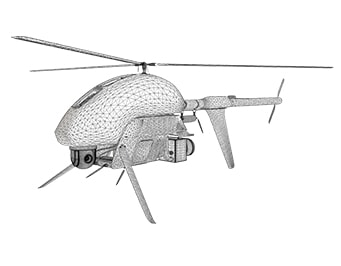Educational Material
6.4 MIL-STD-461G
In an effort to define safe operating levels for military use, MIL-STD-461 was created to give a standard that devices be tested to so that even commercial-off-the-shelf parts could be designed and used in military applications. The standard lays out testing setups and requirements for a variety of EMI issues that may occur in military applications. In the event that a device does not pass the standard, the companies involved may agree to "agreed upon" exemptions when a signal does not seem as if it will be problematic in a given situation.
Test List
CE101 Conducted Emissions, Audio Frequency Currents, Power Leads
This test is to ensure that the equipment under test (EUT) outputs acceptable noise levels on the power leads in the 30 Hz to 10 kHz range. This is important because certain devices such as acoustic receivers or magnetic anomaly detectors may be sensitive to noise in this range.
CE102 Conducted Emissions, Radio Frequency Potentials, Power Leads
Similar to CE101, this test looks for power lead noise in the 10 kHz to 10 MHz range.
CE106 Conducted Emissions, Antenna Port
This test occurs on antenna ports of devices that will be transmitting, receiving, or amplifying. The frequency range involved depends on the highest frequency generated or received by the system, but could include anywhere from 10 kHz to 40 GHz.
CS101 Conducted Susceptibility, Power Leads
This test verifies the EUT's ability to operate while subject to signals coupled directly into the input power leads. The device must not exhibit any malfunction or deviation beyond the tolerances listed in the device specification.
CS103 Conducted Susceptibility, Antenna Port, Intermodulation
This test checks for intermodulation products from injecting noise in the 15 kHz to 10 GHz range on antenna ports.
CS104 Conducted Susceptibility, Antenna Port, Rejection of Undesired Signals
Similar to CS103, this test looks for spurious responses while injecting 30 Hz to 20 GHz noise onto the antenna port.
CS105 Conducted Susceptibility, Antenna Port, Cross-Modulation
CS105 looks for cross modulation on antenna ports of receivers that normally process amplitude-modulated RF signals.
CS109 Conducted Susceptibility, Structure Current
This test looks at the effect of structure currents on the EUT. It applies to EUTs with an operating frequency of 100 kHz or less, and an operating sensitivity of 1 uV or better.
CS114 Conducted Susceptibility, Bulk Cable Injection
This test is to verify EUT performance with 10 kHz- 200 MHz RF signals injected into each cable going to the device. The signal strength is adjusted depending on the actual current induced in the cable.
CS115 Conducted Susceptibility, Bulk Cable Injection, Impulse Excitation
Similar to CS114 but dealing with impulse signals (5 A for 30 ns) occurring at 30 Hz for a duration of 1 minute.
CS116 Conducted Susceptibility, Damped Sinusoidal Transients, Cables and Power Leads
This test looks at the results of applying damped sinusoidal transients at frequencies of 0.01, 0.1, 1, 10, 30, and 100 MHz coupled into all cables and power leads. The pulse frequency is between 0.5-1Hz and repeats for 5 minutes. Peak current during the test is 10 A, with less current required at frequencies over 30 MHz and under 1 MHz.
CS117 Conducted Susceptibility, Lightning Induced Transients, Cables and Power Leads
This test verifies EUT susceptibility to transients typically associated with lightning. Depending on which waveform is tested, the voltage used may be as high as 1500 V for an externally located device.
CS118 Conducted Susceptibility, Personnel Borne Electrostatic Discharge
This test applies to devices with a human-machine interface and involves applying up to +/-15 kV ESD discharges to areas of the device that would likely come into contact during normal use. The device must also be powered during testing.
RE101 Radiated Emissions, Magnetic Field RE102 Radiated Emissions, Electric Field
This test looks at the magnetic field emissions in the 30 Hz to 100 kHz range and includes cables but not antenna radiation. A loop sensor is used to measure the magnetic field.
RE102 Radiated Emissions, Electric Field
RE102 testing depends on the application environment the device will be used in. The emission range could be from 10 kHz to 18 GHz depending on if the environment will be stationary on the ground, internally or externally on a ship or aircraft, or in space. Different antennas are required to detect the emissions depending on frequency range.
RE103 Radiated Emissions, Antenna Spurious and Harmonic Outputs
RE103 may be used as an alternative to CE106, and is the preferred method when an active antenna is used. The test looks for harmonics of the device fundamental frequency in the frequency range of 10 kHz to 40 GHz, dependent on the highest frequency present.
RS101 Radiated Susceptibility, Magnetic Field
RS101 testing involves subjecting the device to external magnetic fields using a radiating loop in the 10 Hz to 100 kHz range.
RS103 Radiated Susceptibility, Electric Field
RS103 tests how the EUT performs while subjected to radiation having frequencies ranging from 2MHz to 18 GHz, with up to 40 GHz as an optional test. Some frequency ranges require vertical and horizontal antenna rotations to account for field polarization.
RS105 Radiated Susceptibility, Transient Electromagnetic Field
RS105 applies to EUTs that are installed in an external electromagnetic environment. The test uses a transient pulse generator to subject the device to a transient EM field. The transient involves a 50,000 V/m pulse lasting 100 nanoseconds.
